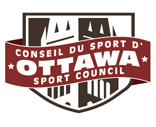As we begin a new year, community sport organizations may choose to launch a new strategic plan, or perhaps to revisit last year’s plan. According to BDC, strategic planning defines who you are as an organization and lists concrete actions to achieve your goals (see more here). This kind of planning activity can help to unify your team and provide a shared vision for decision makers.
Each organization’s strategic plan may look a little different, based on its size and operating model. For smaller organizations, the strategic plan may only be one page; if your organization has many programs and/or members, the strategic plan may be several pages long.
In 2021, the Ottawa Sport Council worked with local business leader Julien Leblanc, co-founder of blueprint North America, to kick off the Rebound program with a series of strategic planning workshops. These virtual workshops had participants walk away with a plan on a page at the end of the day. The distilled version of the workshop can be found here.
Many organizations elect to have a working session, or retreat, (in person or virtually) to develop the strategic plan with key decision makers. If your organization chooses to plan a strategic working session, check out this article from blueprint NA. You may choose to begin by asking yourself and other key decision makers in your organizations some big questions including:
- What is our winning aspiration?
- Where will we play?
- How will we win?
- What capabilities must be in place?
- What management systems are required?
(Questions from former Procter & Gamble CEO A.G. Lafley and Roger L. Martin’s book “Playing to Win: How Strategy Really Works” (see here).)
Important to the strategic planning process is the 70/20/10 rule. This rule divides the work of an organization in three categories:
- 70% of the organization’s work should be in its core business
- 20% of the organization’s work should be in new developments (adjacent innovation)
- 10% of the organization’s work should be in bold new ideas (transformative innovation)
During the Rebound Workshop in 2021, we walked through a four-step process to strategic planning.
- Stand in the future – the vision matters!
- Analysis – what could be?
- Prioritization – what are you saying yes to?
- Communication & Accountability – rallying the troops!
Stand in the Future – The vision matters!
A vision statement is typically defined as the organization’s “why” – a statement declaring your organization’s meaning and core purpose. Your vision statement serves as a rally cry for your organization and provides a common goal.
In the Rebound workshop, participants completed an exercise where they had to first draw pictures to represent what they wanted the organization to be in five years. After taking a step back to look at the pictures, they selected key words and to develop their vision statement. This process allowed for lots of visualization among participants.
Analysis – Going from the “what is” to the “what could be”.
This part of the process is where you define your highest-level goals for the organization for the duration of the strategic planning cycle (this could be 2 years or up to 5 years). Here are some considerations for assessing “what is” and “what could be”:
- Consider your user experience – By working to understand your organization through the eyes of your participants, volunteers, staff, etc., you may realize your intentions are different than the outcomes. You may ask yourselves if your user experience fits within your vision, if it is welcoming to all, and if it meets the needs of participants.
- A SWOT analysis – Traditional strategic planning involves completing a SWOT analysis to look at your strengths, weaknesses, opportunities, and threats. A SWOT analysis should always lead to action. If you list a weakness, ask yourselves “which means I must…”.
Prioritization – What are you saying yes to?
No organization has the capacity to say “yes” to everything it may want to do. It is important that when you say “yes” to something, you realize you are saying “no” to something else. This exercise is influenced by your vision statement, as well as how you apply the 70/20/10 rule.
Julien introduced workshop participants to the Boston Matrix. The Boston Matrix is based on two dimensions, the first being whether the goal is easy/inexpensive or hard/requires significant resources, and the second being whether the goal is big or small. This matrix can help your organization decide which activities have big impacts and which are time wasters (see more here).
Communication and Accountability – Rally the troops!
The final step in the process is to ensure participants understand the plan and their responsibilities to ensure the goals are achieved. Julien recommends the OKR Method (see more here) which has three layers:
- Objectives: Where do we need to go? What is the goal?
- Key Results: How will we know we are getting there?
- Initiatives: What tasks will we do to get there? How do we spend our time?
The OKR Method was an inspiration to many including the Ottawa Lions Track and Field Club who used the OKR Method to make meaningful progress on its organizational objectives.
Strategic planning is a critical step for all community sport organizations of all sizes. Strategic planning is not about creating the perfect plan in one day, but rather setting the right intentions to build a common vision and goal for your team.
If you have any questions, please contact the Ottawa Sport Council.

